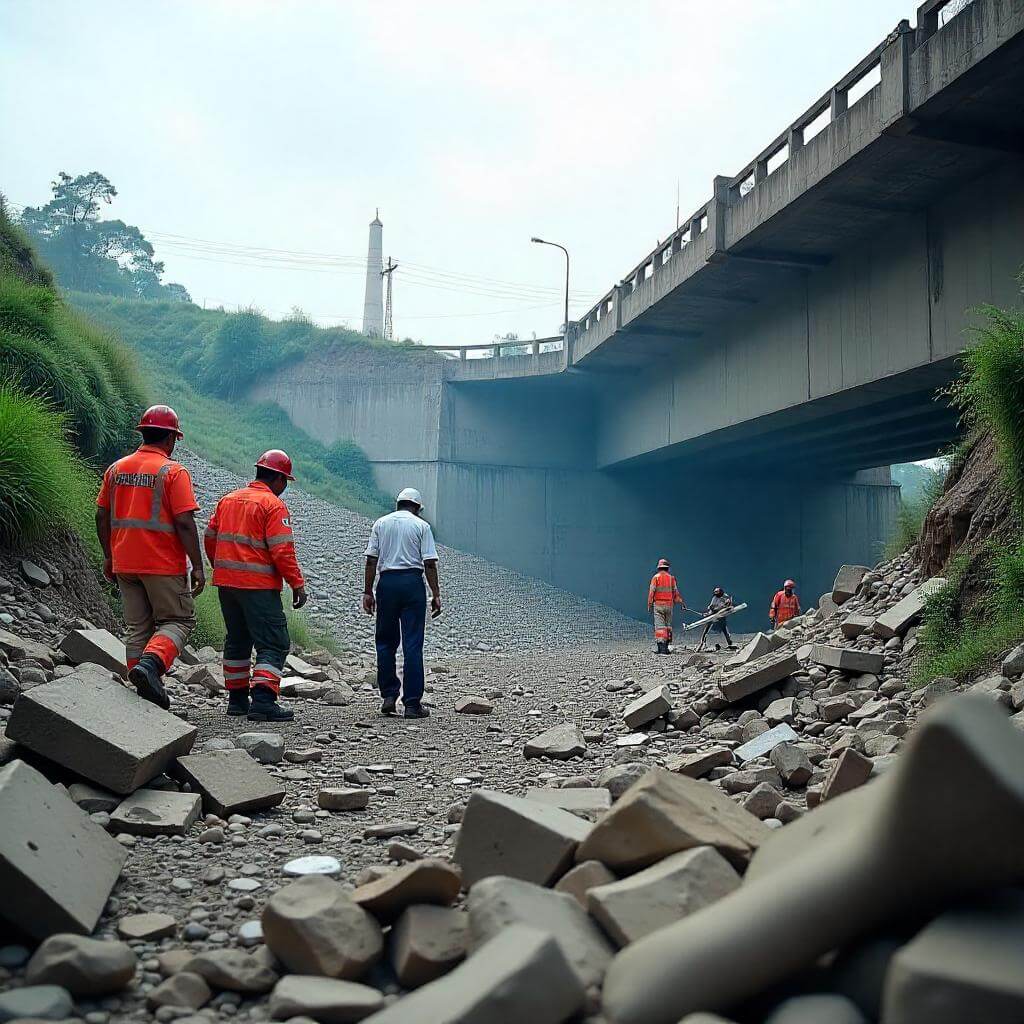June 15, 2025, will go down as a sorrowful day in Maharashtras Pune district. A pedestrian bridge over the Indrayani River near Talegaon fell apart, killing four people, hurting more than fifty, and revealing once again how brittle Indias old infrastructure really is. The sudden failure of the Kundamala footbridge, only thirty kilometers from Pune city, has sparked talks everywhere about who is to blame, how to keep people safe, and what long-term neglect can do.
Overview of the Incident
Around 3:30 PM IST on that Sunday, crowds of tourists and temple-goers packed the decades-old footbridge for their usual monsoon trip. The narrow, four-foot-wide suspension span, built in the early 1990s, was never meant to carry bikes or heavy loads, yet that had become the everyday scene. Soon, motorbikes, schoolchildren, and vendors jostled shoulder to shoulder as the rain-swollen river churned below.
Then, out of nowhere, the cables snapped, and the whole bridge buckled. People heard a violent creak before tumbling into the rushing Indrayani. Some were carried downstream while the rest crashed onto jagged rocks and scattered metal, trapping them in pain as rescue boats fought the current.
Rescue and Response
The moment news broke, rescue teams from the National Disaster Response Force (NDRF), along with local police, firefighters, and crews from the Pimpri Chinchwad Municipal Corporation, rushed to the scene. They sent up drones and dispatched divers to scan the water for anyone still missing. By dawn on June 16, every body had been pulled from the rubble, and the search operation was officially wrapped up.
Of the 51 people hurt, a handful still clings to life in Pune’s top hospitals. Doctors have kept working in shifts while pleas for blood donations spread like wildfire on social media.
What Went Wrong?
The tragedy can be traced back to two main problems: shoddy maintenance and a no-entry-at-all crowd.
- Outdated and Weak Structure
The footbridge was built more than thirty years ago, yet no one bothered to check its guts. Residents pointed out fraying cables, sagging supports, and missing planks, but their warnings were filed away and forgotten.
- Overcrowding
Eyewitnesses say more than one hundred people stood on the span when it gave way. Because the walkway was narrow and never meant for so many feet-or any vehicles-it turned into a human pressure cooker. Temple-goers heading to the shrine ignored signs telling them to spread out.
Ignored Warnings
For months, town officials and civic groups had sounded alarms about the bridges shaky condition, yet their notes were filed away or quietly brushed aside. Street vendors, neighborhood NGOs, and even worried residents asked the city for a safety check or a short-term closure, but nobody bothered to reply.
Government Reaction and Accountability
Maharashtras Deputy Chief Minister, Ajit Pawar, blamed rust and heavy foot traffic for the failure and quickly promised an investigation. He also unveiled a relief plan worth several lakhs:
- 5 lakh (500,000) for families who lost loved ones
- 1 lakh for those with serious injuries
- cost-free medical care for everyone hurt in the fall
Chief Minister Devendra Fadnavis sent condolences and ordered inspectors to review every similar footbridge in the state. Prime Minister Narendra Modi added his sympathies and stressed the twin goals of fast justice and tighter safeguards.
Authorities have now convened a panel of structural engineers, city staff, and disaster specialists to dig into what went wrong.
Broader Implications: A Wake-Up Call
The Pune disaster is not a lone figure sitting on its own. In the last ten years India has logged many bridge failures, with Morbi (Gujarat, 2022) topping the list at more than 140 lives lost. The Pune tragedy now joins the grim roster and shouts out three big problems:
- Infrastructure sits untended too long.
- Cities teem with people, yet crowd plans vanish.
- Rules exist on paper but drift when no-one supervises.
What Needs to Change?
- Mandatory Structural Audits
Every public bridge, and every old slab of concrete, should meet a set-in-stone check-up by licensed civil engineers. Repairs then need to happen before a crack is visible, not after.
- Clear Usage Guidelines
Weight limits, who crosses first, and how many feet can stand at once should be spelled out in bold signs. Local officials must jump on these rules during festivals, fairs, or any packed moment.
- Technology-Based Monitoring
Stick IoT sensors and smart cameras on key spans. They track strain, crowd flow, and rain in real time, pinging alerts before trouble brews.
- Public Awareness Campaigns
People must learn that jamming a bridge or ignoring limits can kill. Change starts at street level, so education must keep pace with new laws.
- Stronger Accountability Laws
If an official sleeps on watch, she faces fines, suspension, or even jail. Builders and upkeep firms share the blame and will pay heavy if proven careless.
The Human Cost
Numbers can feel distant, but behind each figure is a family torn apart and a future interrupted. A ten-year-old boy from Lonavala lost his life while on a rainy-day picnic with his mom and dad. A 65-year-old woman who lived through the collapse told how the bridge shook, then vanished, leaving her panic-stricken and broken.
Brave neighbors and quick volunteers leaped into the angry river and dragged people to safety. Their heroism proved what community can do, even as it exposed how badly local officials had prepared.

Conclusion
The Pune bridge disaster of 2025 proves in harsh terms that ignoring maintenance, brushing off alarms, and choosing speed over safety cost lives. While probes are running and pay-outs promised, the country really needs firm accountability, smart reforms, and a plan that plans ahead.
This tragedy isnt about a single span of steel and concrete; its a warning for the many other hidden hazards scattered through Indias towns and countryside. Action has to come now, or the next emergency will find us just as unready.
Read more: https://newsripple.vip/ https://nextlens.boats/wp-adim/



